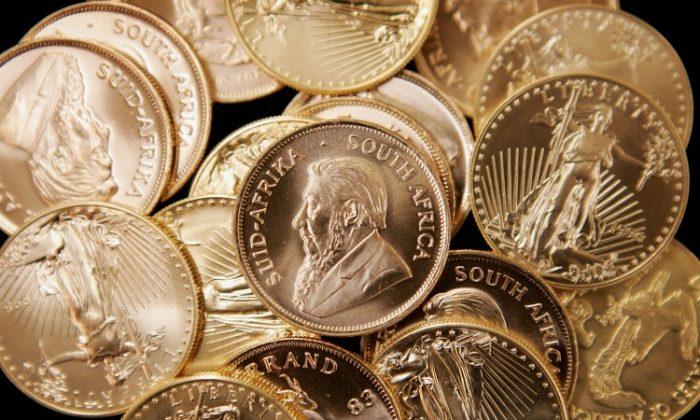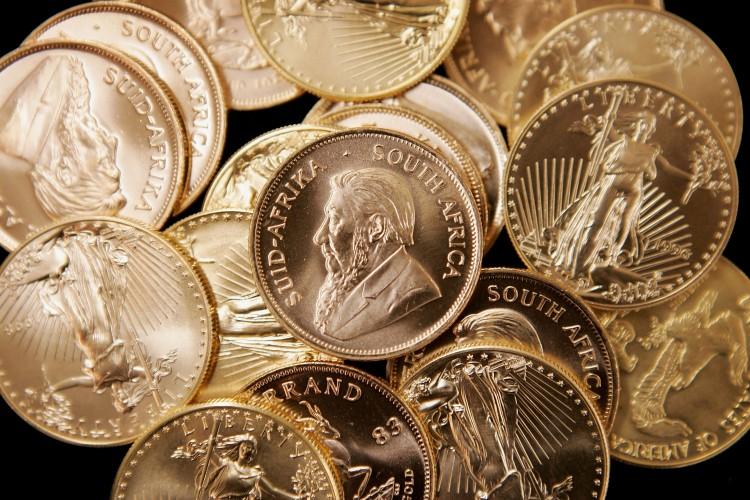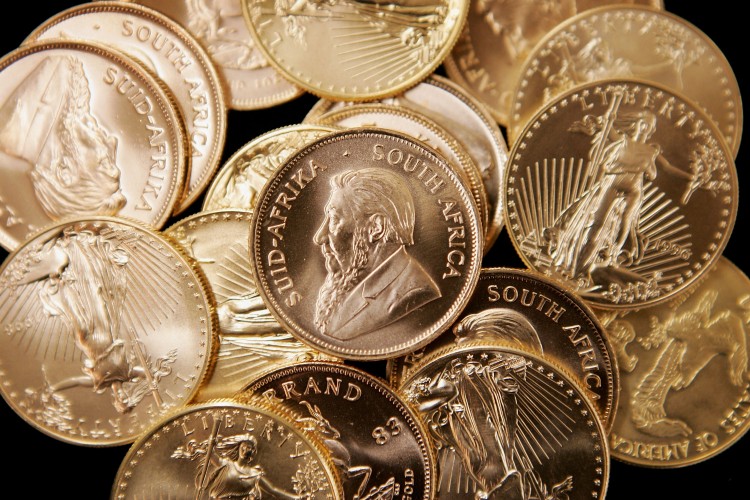The price of gold reached a high of $1,744 per ounce and a low of $1,598 per ounce in January. February was a great month for selling gold with a high of $1,781 and a low of $1,711.5, while in March, gold prices slid down from $1,714 on March 1 to $1,662.5 on March 30. On April 2, gold moved up a little to $1,677.5, after which it slowly began another descent. On the afternoon of April 16, the price of gold was at $1,651.50.
“It was a challenging week for gold investors. Although the yellow metal has been on a spectacular 11-year bull run, recent strength in the economy has some thinking gold’s heyday is over,” according to an April 9 article on the U.S. Global Investors website’s “Frank Talk.”
Since 2006, gold prices have dropped sharply on only six occasions, including the 5.1 percent decline on Feb. 29. The first one happened on May 15, 2006, with a 5.2 percent drop and then on June 13, 2006, with a 7 percent decline. In 2008, the market experienced three such declines: On Oct. 10, the price of gold went down 6.9 percent, on Oct. 22, it declined by 5.3 percent, and on Dec. 1, it dropped by 6 percent.
Another case in point is that over the past 10 years, the price of gold has been below the 200-day moving average price only about three times per year.
The moving average price is an average calculated over a specific time period, generally 20, 30, 50, 100, and 200 days, which is often used to smooth out up and down movements by dropping the number from the oldest date and adding the number of the latest date.
“This time around, I believe gold has the resilience to endure, as the long-term drivers remain in place,” a “Frank Talk” article suggested in March.
The writer argues that government actions are in part the driver of gold prices. Apparently, when the Indian government considered doubling the customs duty for gold, jewelers closed their shops and “gold imports into the world’s largest gold market fell 55 percent.”
Central Banks and Gold Prices
“Gold and silver bugs watch pronouncements by central banks describing their gold reserves in order to gain a clearer picture of the future price of the metals,” according to a March Seeking Alpha article.
On Feb. 29, when the price of gold dropped to $1,770 per ounce, the Bank of International Settlements (BIS), which was established by the world’s central banks to further financial and monetary stability, purchased between four and six tons of gold. Given that the BIS does not release any data, it is not known which of the world’s central banks bought the gold, but an article on the Profit Confidential website speculates that it was by an Asian central bank.
Making a case for the true value of gold, a recent article on the Seeking Alpha website states, “Given the extremely high correlation between central bank balance sheets and the price of gold, it is possible to determine the implied price relative to current debt levels. In doing so, we calculate gold’s ‘central bank balance sheet value’ at around $1,900 an ounce.”
According to Seeking Alpha, based on the up and down swings of the gold prices over the past months, gold should sell at around $1,650 per ounce, down $250 from the central bank balance sheet value of $1,900 an ounce. On the afternoon of April 16, the price of gold was $1,651 per ounce—very close to Seeking Alpha’s suggested $1,650 discount price.
Different Predictors of Gold Prices
“Unlike fiat currencies, which are manipulated by finance ministries and central banks, gold can’t easily be manipulated. Gold is the measuring rod of economics, whether we like it or not,” states David Merkel, owner of Aleph Investments LLC, in the article “Gold does Nothing” on the Aleph Blog website.
Merkel suggests that gold responds to changes in real interest rates in that prices decline when real interest rates drop and rise when real interest rates go up.
Because gold is a physical solid product, a government’s control over it is kept at a minimum as the price of physical gold is much more difficult to manipulate.
Another recent article about gold, published on the Seeking Alpha website in March, suggests that calculating the gold price based on any central bank’s holding of gold is too complicated. A better predicator is money flow, according to author Scott Gibson, through the development of some uncomplicated charts. Such charts suggest that an ounce of gold will trade down to around $1,500 and “can clarify whether we should be long or short in gold and silver.”
Gold’s Bull Market is Taking a Breather
“There are good reasons to believe that gold will retreat in 2012 and disappoint a lot of gold bugs,” according to another one of the many recent articles on the subject of gold on the Seeking Alpha website.
The above reasoning is built on historical trends. Gold has been in a bull market, which according to historical analysis, lasts between 15 and 20 years, with an average of about 17 years.
Gold’s bull market has reached its 13th year, which generally, given historical trends, is the year in which the bull market theory doesn’t apply. Therefore, no upward movement should be expected until the end of this year.
If the trend holds true, according to analysts, one should buy gold this year, while it is still low, because at the end of 2012, an upward movement of the price of gold should be expected.
“Given that this is an election year, we are perhaps likely to see more intervention by the authorities to boost the economy and suppress the price of gold,” the Seeking Alpha article suggests.






